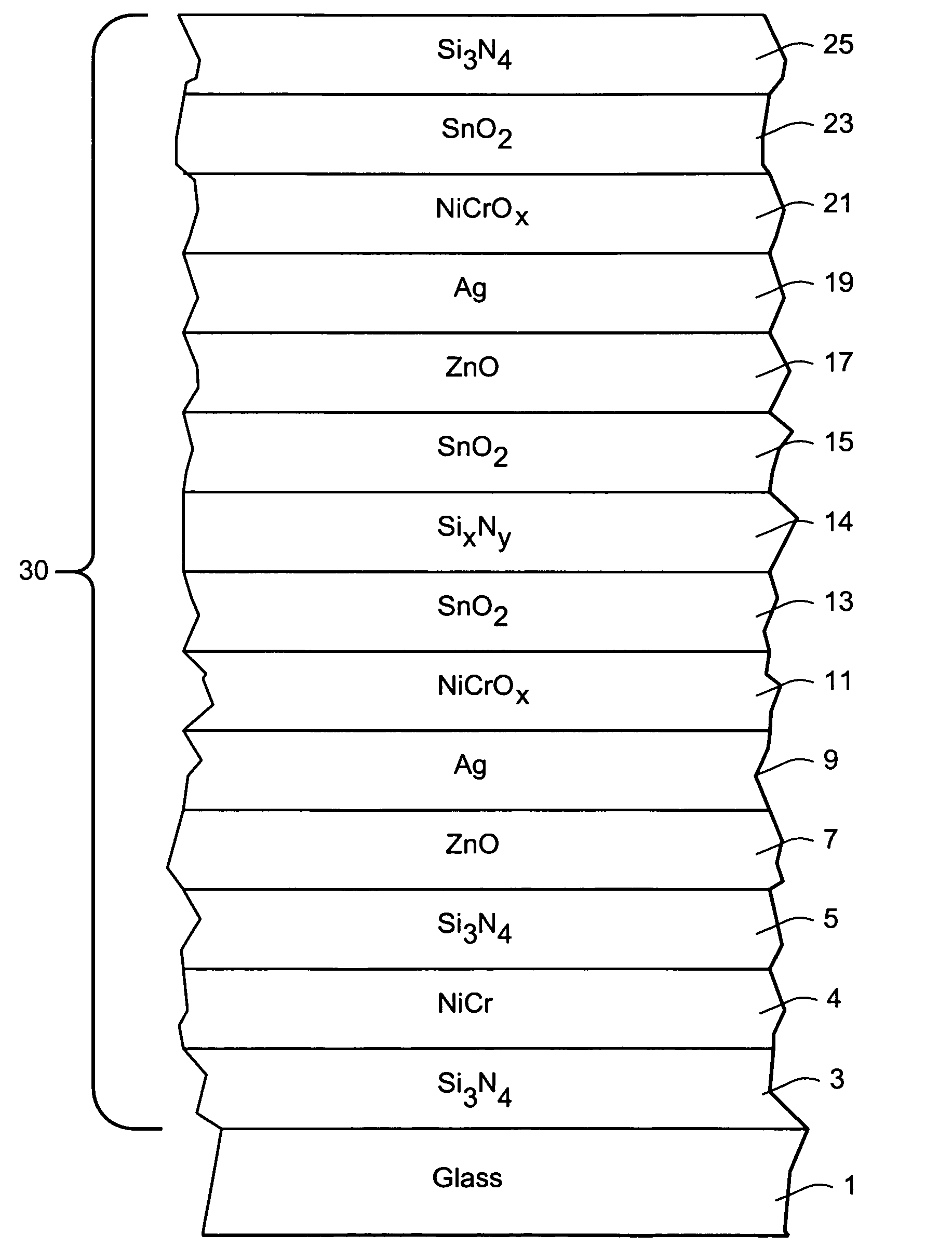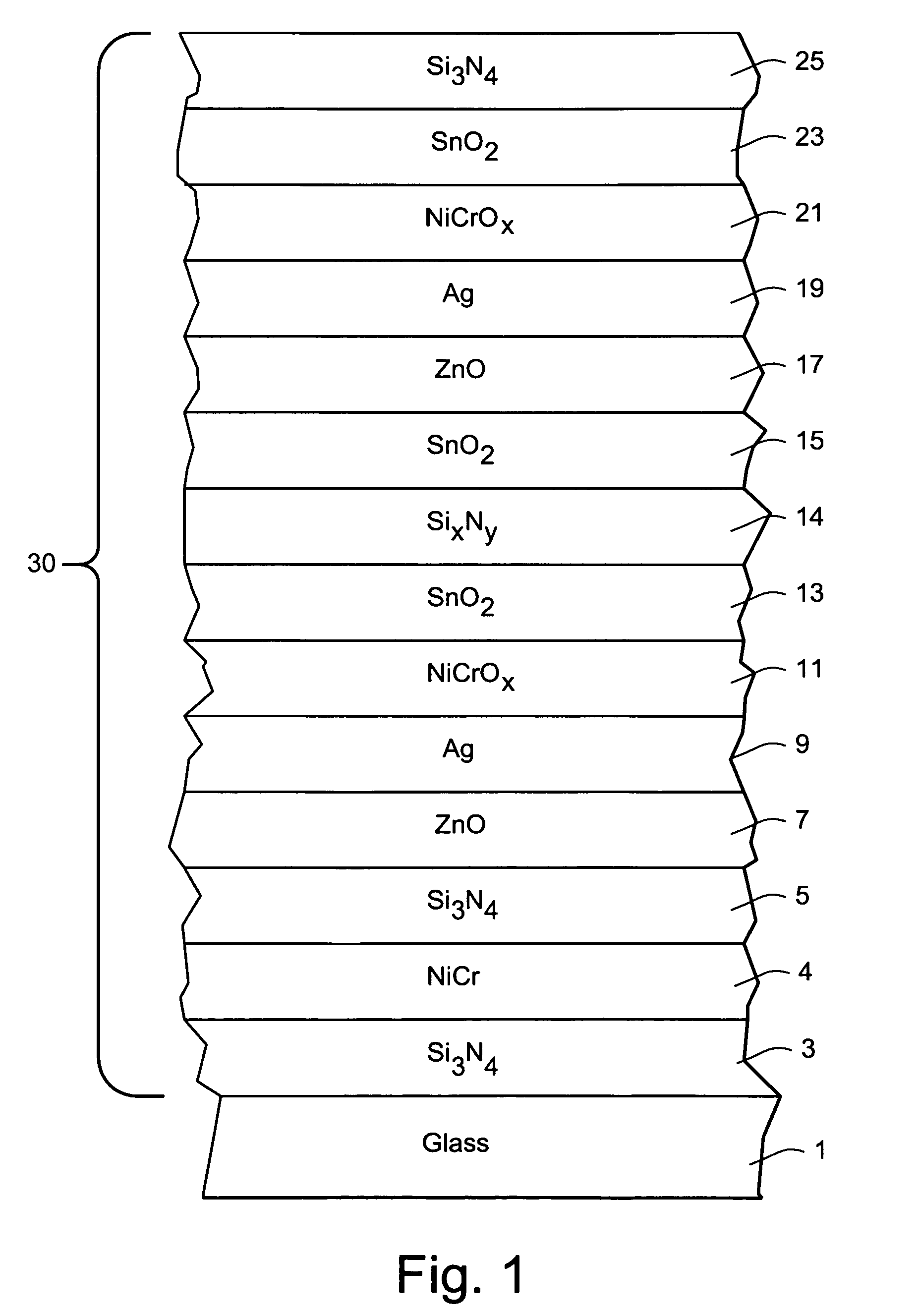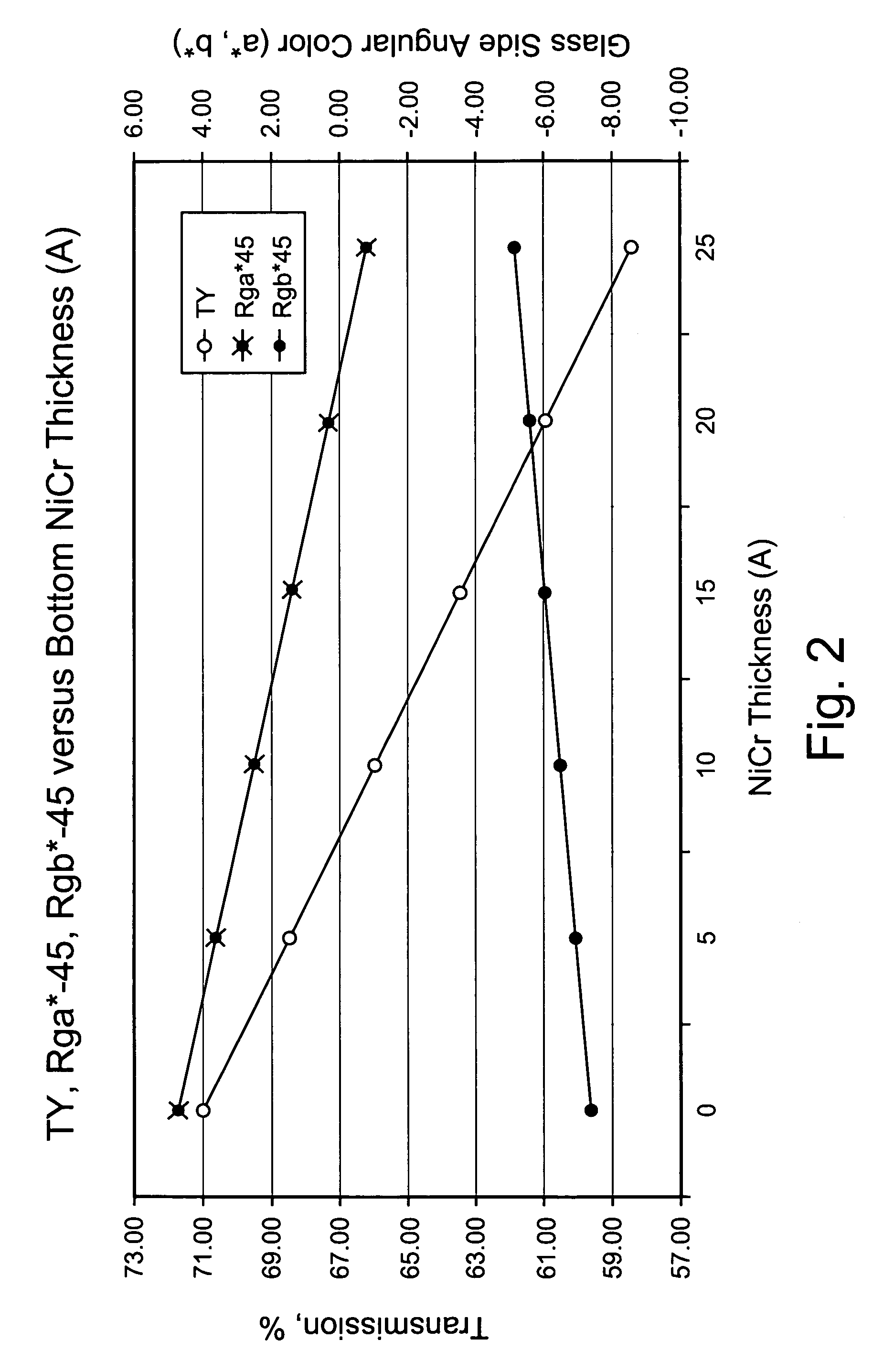Coated article with low-E coating having absorbing layer designed to neutralize color at off-axis viewing angles
a technology of low-e coating and absorbing layer, which is applied in the direction of natural mineral layered products, transportation and packaging, chemistry apparatus and processes, etc., can solve the problems of significant deterioration in undesirable manner of one or more of the above-mentioned desirable characteristics, the breakdown of the coating, and the undesirable off-axis color values, etc., to achieve less visible transmission shift, improve thermal stability, and improve the effect of mechanical durability
- Summary
- Abstract
- Description
- Claims
- Application Information
AI Technical Summary
Benefits of technology
Problems solved by technology
Method used
Image
Examples
examples
[0050]The following Example 1 was made via sputtering on 6 mm thick clear glass substrates so as to have approximately the layer stack set forth below. Example 1 is according to example embodiments of this invention as shown in FIG. 1, whereas the modeled Comparative Example (CE) has no NiCr absorbing layer 4 and is provided for purposes of comparison. Example 1 had approximately the following layer stack, where the thicknesses are in units of angstroms (Å).
[0051]
LayerGlass (6 mm thick)Thickness ({acute over (Å)})SixNy (layer 3)124 ÅNiCr (layer 4) 25 ÅSixNy (layer 5)200 ÅZnOx (layer 7)110 {acute over (Å)}Ag (layer 9)119 {acute over (Å)}NiCrOx (layer 11) 30 {acute over (Å)}SnO2 (layer 13)442 ÅSixNy (layer 14)125 {acute over (Å)}SnO2 (layer 15)100 ÅZnOx (layer 17)100 {acute over (Å)}Ag (layer 19)155 {acute over (Å)}NiCrOx (layer 21) 30 {acute over (Å)}SnO2 (layer 23) 70 ÅSi3N4 (layer 25)302 {acute over (Å)}
[0052]The Comparative Example (CE) was essentially the same as Examples 1 and 2...
PUM
| Property | Measurement | Unit |
|---|---|---|
| thick | aaaaa | aaaaa |
| SHGC | aaaaa | aaaaa |
| thick | aaaaa | aaaaa |
Abstract
Description
Claims
Application Information
 Login to View More
Login to View More - R&D
- Intellectual Property
- Life Sciences
- Materials
- Tech Scout
- Unparalleled Data Quality
- Higher Quality Content
- 60% Fewer Hallucinations
Browse by: Latest US Patents, China's latest patents, Technical Efficacy Thesaurus, Application Domain, Technology Topic, Popular Technical Reports.
© 2025 PatSnap. All rights reserved.Legal|Privacy policy|Modern Slavery Act Transparency Statement|Sitemap|About US| Contact US: help@patsnap.com



